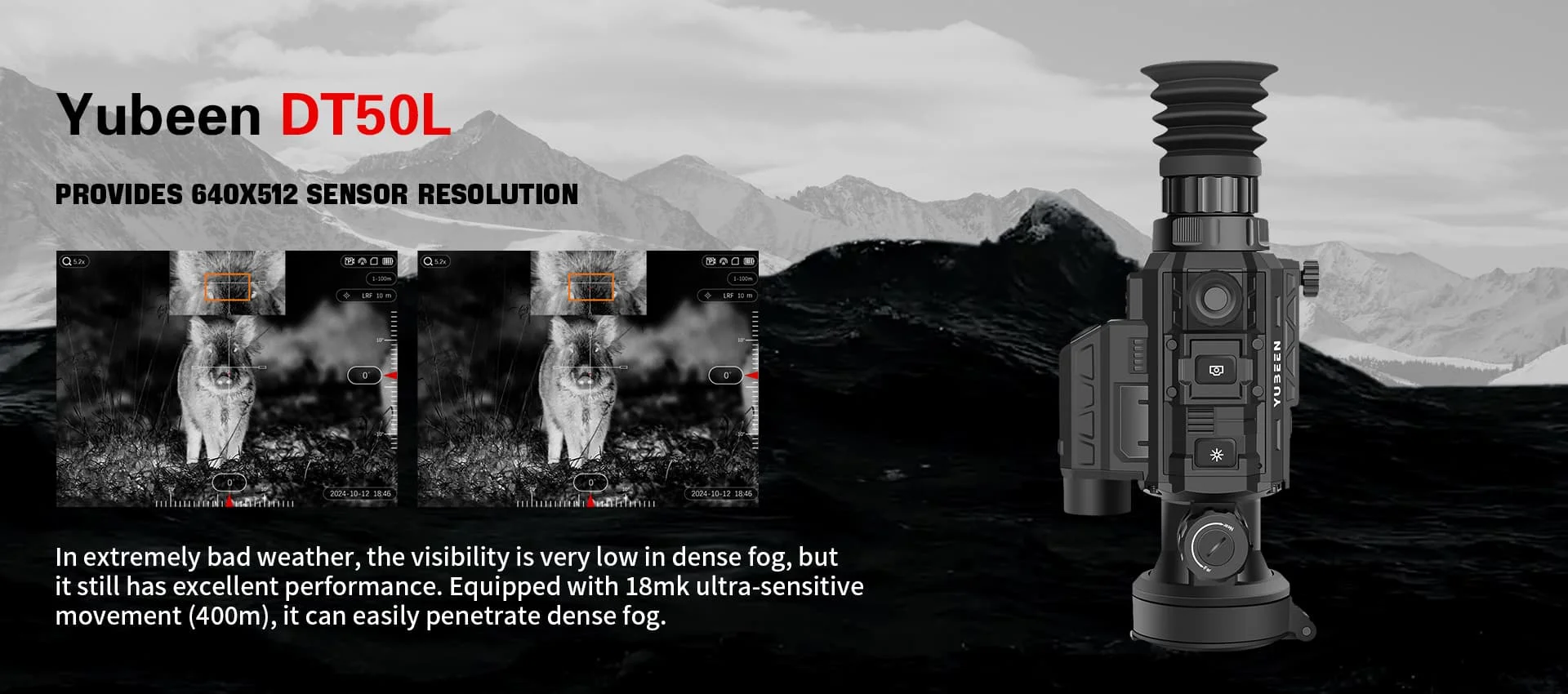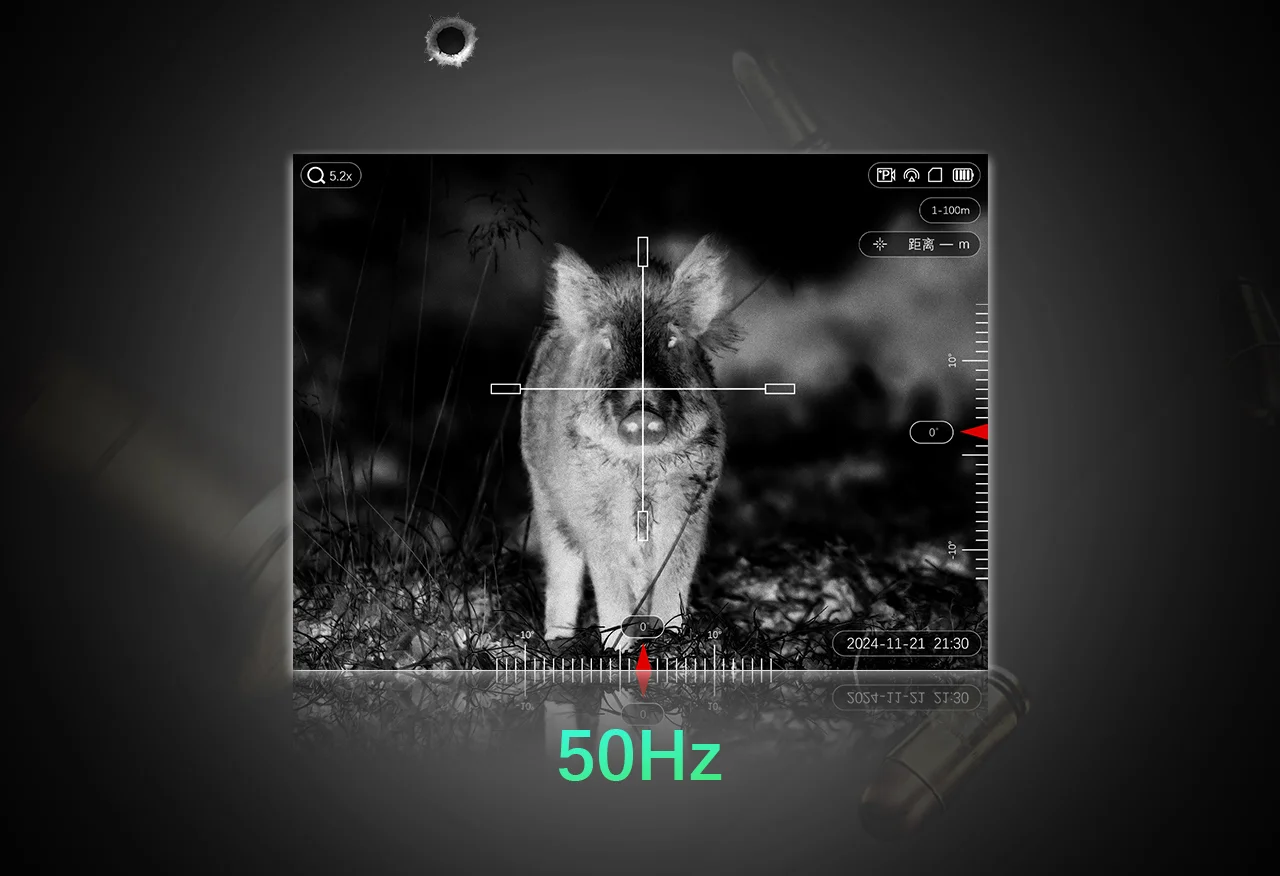Can a Thermal Imaging Scope Penetrate Rain, Fog, and Bright Light?

How Does Thermal Imaging Technology Work?
What Is the Science Behind Thermal Imaging and Heat Detection?
Thermal imaging catches heat energy, also called infrared radiation, that everything gives off based on its temperature. Your eyes can’t see this energy, but special cameras in YUBEEN scopes can pick it up. These cameras turn the heat into signals, and those signals become pictures you can look at. Hot stuff gives off more heat, so it stands out in the pictures.
One important thing in thermal imaging is NETD, which means Noise Equivalent Temperature Difference. It shows how good a device is at spotting tiny heat changes. For instance, lots of cool YUBEEN scopes have NETD values below 18mK. That means they can see even small heat differences, even in wild or tough places.
Why Is Thermal Imaging Different from Night Vision?
Night vision takes tiny bits of light, like from stars or the moon, and makes them brighter so you can see. But it needs some light to work. If it’s dark or there’s fog or smoke, night vision isn’t much help.
Thermal imaging, on the other hand, doesn’t need light at all. It looks for heat instead. That’s why YUBEEN thermal imaging scopes are super useful in complete darkness or when fog makes it hard to see anything.
How Are Heat Signatures Formed and Captured?
Everything gives off heat energy because how warm it is. Scientists call this blackbody radiation. YUBEEN thermal scopes grab this energy and turn it into pictures. In these pictures, hot things look bright or maybe red, while cooler things look darker. It’s like a heat map that helps you find stuff.
Can Adverse Weather Obstruct Thermal Imaging Performance?
How Does Rain Impact Image Clarity and Target Detection?
Rain can make thermal pictures a little blurry. That’s because water cools things down, so there’s less difference between hot and cold stuff. But rain has its heat pattern, different from air or objects. YUBEEN scopes, with their super-sensitive NETD <18mK, can still spot things well in the rain.
Take the YUBEEN DT50L, for example. It can see up to 2,600 meters away, even when it’s pouring. It has a clear 640×512 sensor and smart tools like Digital Detail Enhancement (DPC) and hotspot tracking to keep the picture sharp.
Can These Devices See Through Fog Accurately?
Fog is tough because its tiny water drops scatter both light and heat energy. Night vision struggles in fog, but thermal imaging does a better job. That’s because it looks for heat coming from things, not light bouncing off them.

Still, super thick fog can weaken heat signals a bit, depending on the size of the water drops. YUBEEN scopes with sensitive sensors (NETD <18mK) handle fog better. They also have neat features like Picture-in-Picture (PIP), which lets you zoom in on something but still see what’s around it.
What Happens When Snow or High Humidity Enters the Scene?
Snow can cover up heat like a cozy blanket, hiding heat signatures. High humidity can also be a problem by warming things up evenly, so there’s less difference to spot. But YUBEEN scopes use smart computer tricks to make edges pop and focus on active heat sources, like people or animals, instead of plain backgrounds.
The YUBEEN DT50L has a tough IP67-rated case that can take on cold (-30°C) or hot (55°C) weather. That makes it great for snowy places, and it keeps working well even after a long time outside.
Does a Thermal Imaging Scope Work in Daylight?
Is Infrared Detection Still Effective During Bright Light Hours?
You bet! YUBEEN thermal imaging scopes work just as well when the sun’s shining as they do at night. They don’t need light because they’re looking for heat energy. Sometimes, sunlight even helps by warming things up differently, which makes them easier to spot in thermal pictures.
How Does Daytime Use Compare with Traditional Optical Scopes?
Regular scopes rely on what your eyes can see. But shadows or clever camouflage can hide things during the day. YUBEEN thermal imaging scopes don’t worry about that. They show heat, so they can find animals hiding in bushes or people tucked away near buildings. This makes them a huge help, day or night.
What Features Enhance Visibility Across All Weather Conditions?
Which Built-In Technologies Support All-Weather Operation?
YUBEEN thermal imaging scopes have some cool features to handle bad weather:
- sensitive sensorswith NETD <18mK pick up even tiny heat changes, even when it’s hard to see.
- Recoil-activated recordingsaves a video when you shoot, so you don’t miss key moments.
- Different viewing modeslike Black Hot, White Hot, Red Hot, or Fusion help you see better in all kinds of weather.
- Picture-in-Picture modelets you zoom in on something while still keeping an eye on everything else.
- Tough IP67-rated caseskeep out dust and water, even if the scope gets wet up to 1 meter deep.
Which Models Offer the Best Performance in Foggy or Rainy Conditions?
If you’re in a wet or foggy area, the YUBEEN ET50 is a solid choice. It can see things up to 2,600 meters away with a narrow lens and clever tools like DPC and hotspot tracking.
For something smaller but still strong, the YUBEEN ST35L is great fun at medium distances. It even has ballistic calculation tools, which are super handy for hunters in tough spots.
Where Can You Apply This Technology Effectively?
How Do Outdoor Enthusiasts Benefit from These Scopes?
Hunters like YUBEEN thermal imaging scopes, and not just for night hunting. They help spot animals hiding in thick bushes or moving through forests at dawn or dusk. People who watch wildlife use them too, to see animals without spooking them, even if they’re behind leaves or branches.
What Role Do They Play in Search & Rescue Operations?
When it’s foggy or super dark, search teams use YUBEEN thermal scopes to find people by their body heat. It doesn’t matter what clothes they’re wearing or how dark it is—these scopes spot them quickly.
Are They Useful for Security Surveillance Purposes?
Totally! Security folks use YUBEEN scopes to keep an eye on places where regular cameras don’t work well. They can see people hiding behind fences or blending into plants because of their heat signatures.
How Should You Maintain Your Device After Harsh Weather Exposure?
What’s the Best Way to Clean Lenses Without Damaging Them?
Use a soft microfiber cloth made for camera lenses and some gentle cleaning liquid. Don’t rub a dry lens if it’s dirty—it might scratch the special coating. See if your YUBEEN scope has lens covers. Use them when you’re not using the scope to keep it safe.
How Should You Store It After Moisture Exposure or Extreme Cold?
Let your scope warm up slowly to room temperature after being in cold or wet places. This keeps water from forming inside and damaging the parts. Store it in a dry case, and maybe toss in some desiccant packs to soak up moisture, especially after rainy or humid days.
FAQ
Q1: Can a thermal imaging scope see through walls?
A: No way! YUBEEN scopes only see heat on surfaces, not through solid stuff like walls.
Q2: Will heavy rain completely block out targets from being detected?
A: Not really. Rain might make pictures a bit less clear because it cools things down, but YUBEEN scopes can still find targets.
Q3: Do I need special training to use ballistic functions?
A: Nope! Some YUBEEN scopes have easy ballistic modes that don’t need you to know complicated stuff like bullet speed. Even new users can handle them with simple settings.
